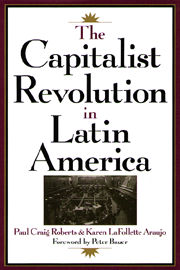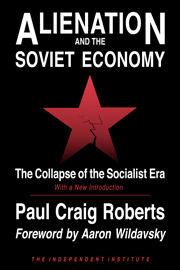When President Reagan announced a supply-side economic policy, the Keynesian economic establishment on Wall Street, in the universities and in Congress predicted financial Armageddon.
Instead, the economy and the stock market began a long expansion that has seen the Dow rise from under 1000 in 1980 to over 9000 this year. To continue this wealth-building process, it’s important to understand what produced this surge in equity values.
Traditional economic analysis has no explanation. Indeed, the “triple-digit” budget deficits that accompanied the rise in equity values were supposed to cause high interest rates that would crowd out investment, stop growth and deflate equity prices.
Traditional economic analysis was mistaken in the role it assigned to deficits and interest rates. In economies burdened with corporate and personal income taxes, capital gains taxes and drawn-out capital depreciation schedules, changes in taxation have a far more powerful effect on the cost of capital than changes in interest rates do.
Supply-side economists saw that taxation, not the level of interest rates, was the main policy variable affecting investment. The higher the rate at which income is taxed, the lower the after-tax rate of return.
In effect, taxation reduces the universe of profitable investments.
Interest rates affect the cost of capital through their effect on tax write-offs, such as depreciation allowances. When inflation and interest rates rise, the present values of depreciation deductions fall. Capital is recovered less completely as the real value of the deductions erodes.
With this in mind, we can now understand the stock market’s rise. The Reagan tax cut of ‘81 substantially lowered the cost of capital, causing capital assets to rise in value and increasing the universe of profitable investments. The simultaneous fall in the rate of inflation also boosted these values, because the lower inflation and interest rates increased the value of the capital recovery allowances.
The 1986 Tax Reform Act had contradictory effects on investment. Personal and corporate income tax rates were lowered again. But depreciation lives were lengthened, the differential treatment of capital gains was ended, and real estate investments were hurt by changes in tax rules. The 1986 changes raised the cost of capital, but left it below the pre-Reagan level.
President Bush’s 1990 “budget deal” brought a small increase in the income tax rate. Clinton added another increase in ‘93 with his phase-out of itemized deductions and personal exemptions. These tax hikes hurt, but they didn’t wipe out all the improvement that Reagan began.
Moreover, the inflation rate has continued to fall and now measures 2% or less.
If we compare pre-Reagan double-digit inflation and 70% tax rate on investment income with today’s 2% inflation and approximately 40% top tax rate, we see that the after-tax return on investment has been substantially improved. Thus, there are real reasons for the rise in equity values.
Equity values were also boosted by the collapse of socialism and the rise of global markets.
These positive changes have now worked their way into equity values. With the economy producing a surplus of tax revenues, we must reinvest some of the surplus in further cuts in the cost of capital in order to keep the wealth-building process under way. Otherwise, we are likely to lose both the expansion and the surplus.
Steve Entin, director of the Institute for Research on the Economics of Taxation in Washington, suggests we use the surplus revenues to shorten depreciation lives and move to expensing—or one-year writes—of plant and equipment. Another good move would be to end the double taxation of dividends.
Perhaps the best use of all for the budget surplus would be to cover the transitional costs of privatizing the Social Security system. it would be a boon to saving and investment if every American had a managed portfolio of assets to underwrite his retirement instead of the government’s promise to tax employment in order to make a transfer payment o retirees.
Such a boon would put a real foundation under retirement that would certainly boost equity values.









